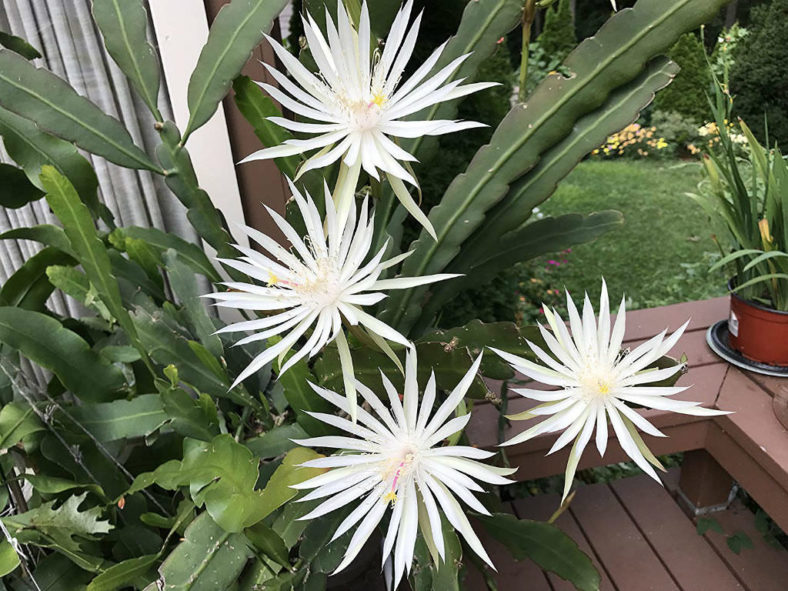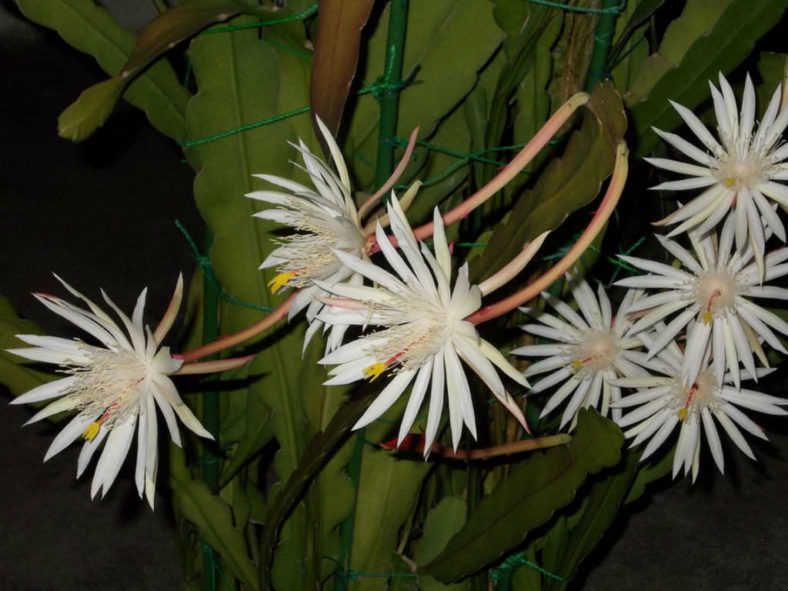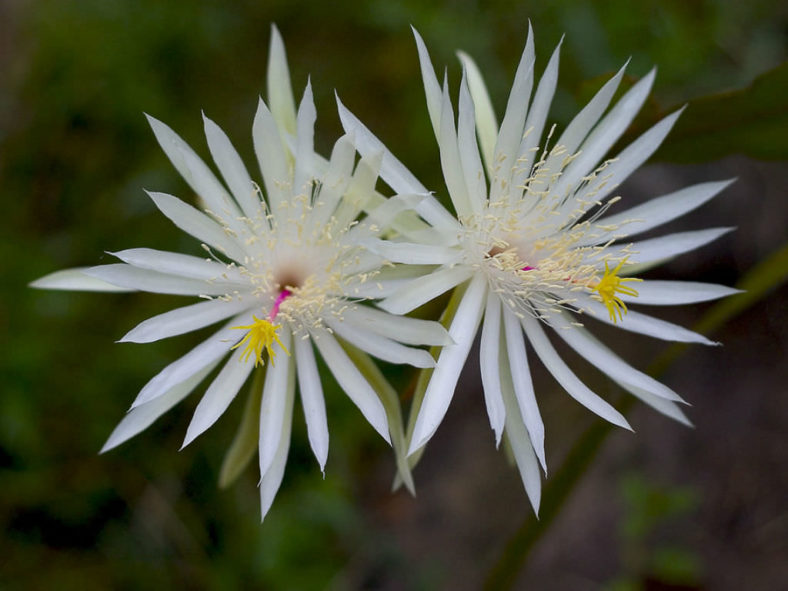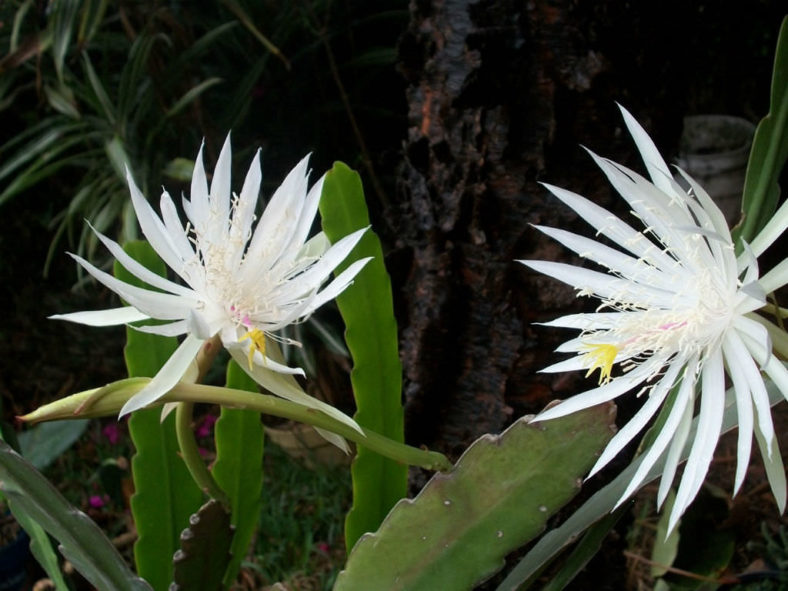Scientific Name
Epiphyllum hookeri Haw.
Common Name(s)
Climbing Cactus, Hooker's Orchid Cactus
Synonym(s)
Cereus hookeri, Epiphyllum hookeri subsp. hookeri, Epiphyllum phyllanthus subsp. hookeri, Epiphyllum phyllanthus var. hookeri, Phyllocactus hookeri
Scientific Classification
Family: Cactaceae
Subfamily: Cactoideae
Tribe: Hylocereeae
Genus: Epiphyllum
Origin
Epiphyllum hookeri is native to Costa Rica, El Salvador, Guatemala, Honduras, Nicaragua, Cuba, Venezuela, and Mexico.
Description
Epiphyllum hookeri is a climbing cactus that forms a loose mass of long, flat, strappy foliage, resulting in a lovely sculptural effect.
The mature plants produce large, white, fragrant flowers in summer. The flowers open only at night and close by morning. They can reach up to 9 inches (22.5 cm) in length and 8 inches (20 cm) in diameter.

Hardiness
USDA hardiness zones 9b to 11b: from 25 °F (−3.9 °C) to 50 °F (+10 °C).
How to Grow and Care
Epiphyllums are hardy to about 50 °F (10 °C) but require at least 60 °F (15 °C) during the growing season, so they are best grown in a heated greenhouse, conservatory, or indoors. Place the pots in bright, filtered light with moderate to high humidity. To increase the humidity, position the pot on a tray filled with gravel and keep this topped up with water, but not enough so that the water reaches the surface. These cacti require sharply drained growing media. Grow them in a standard cactus soil with added grit or perlite. Alternatively, mix three parts of loam-based compost with two parts of grit or perlite and 1 part of peat-free multipurpose compost.
Overlong stems can be cut off or shortened. New shoots will usually develop just behind the cut. However, be careful not to overwater after pruning, as the plant's water requirements will be reduced. Large Epiphyllums can become unstable in their pots. Repot into a heavier pot, such as terracotta, or a wider container, such as a pan. Alternatively, try canes and tying the stems up, but this can look unsightly.
Learn more at How to Grow and Care for Epiphyllum.
Subspecies
Links
- Back to genus Epiphyllum
- Succupedia: Browse succulents by Scientific Name, Common Name, Genus, Family, USDA Hardiness Zone, Origin, or cacti by Genus
Photo Gallery
Click on a photo to see a larger version.


